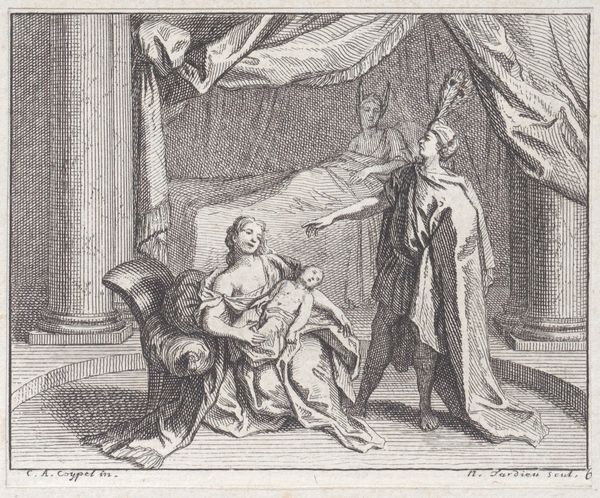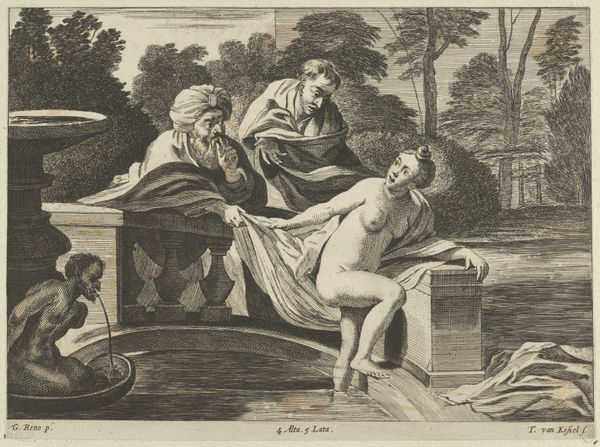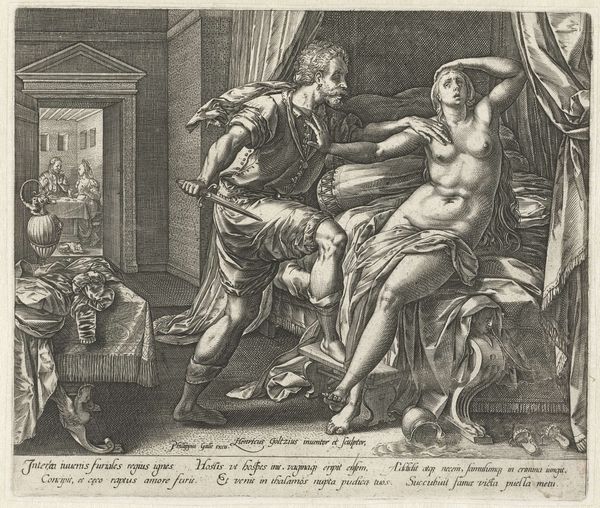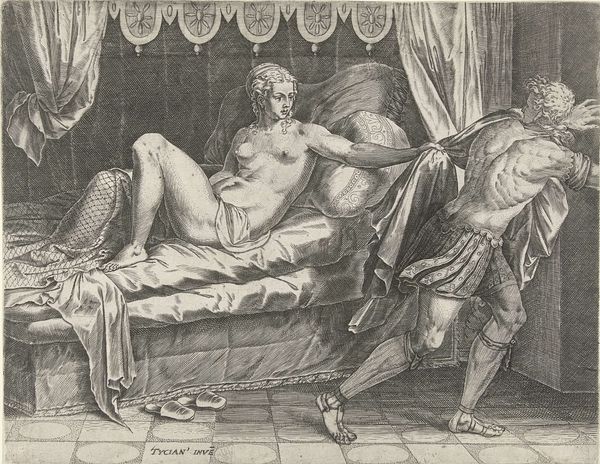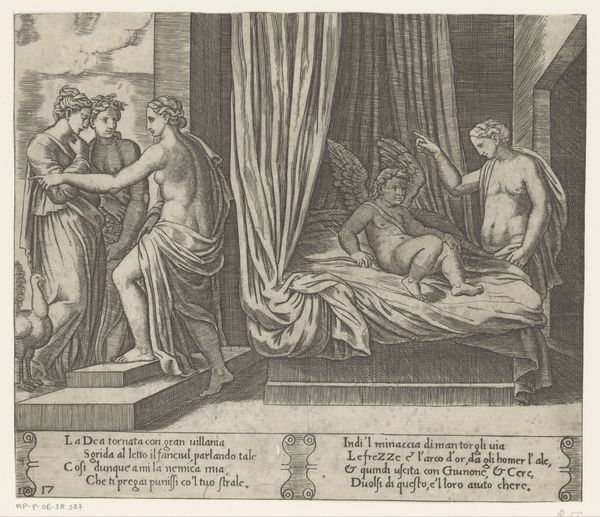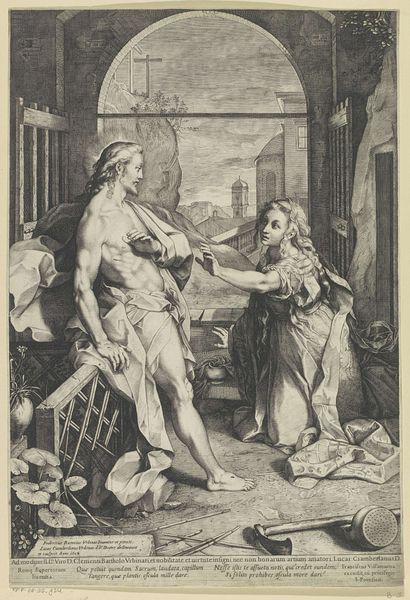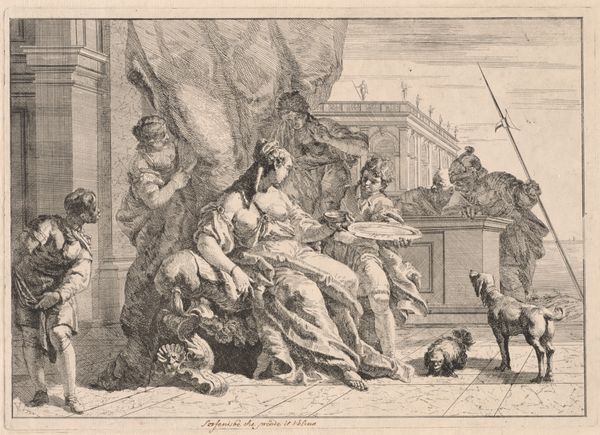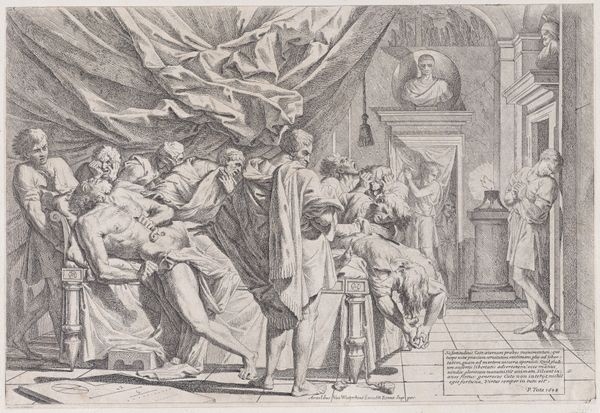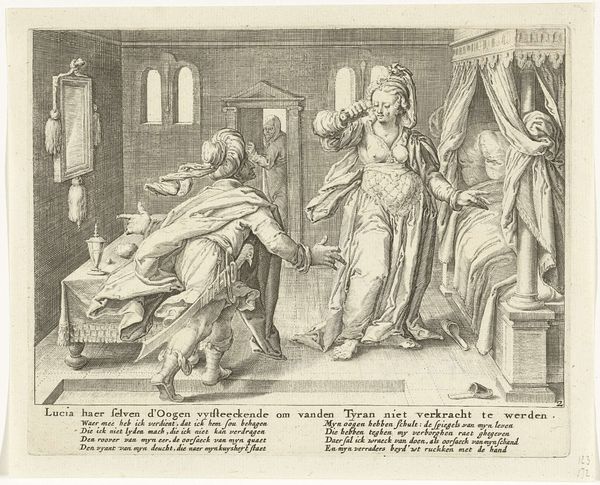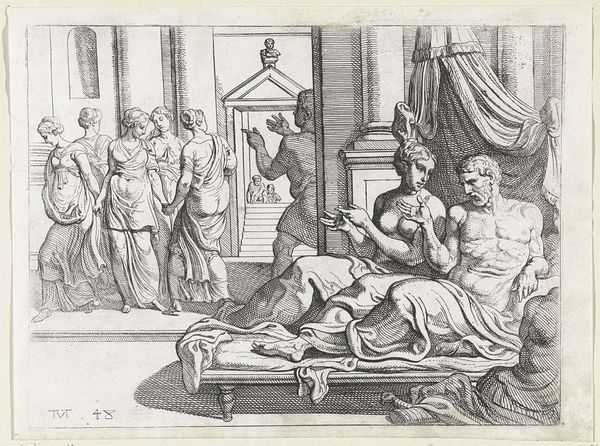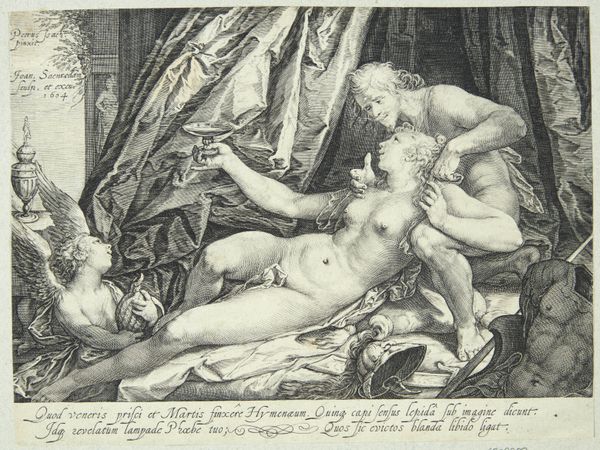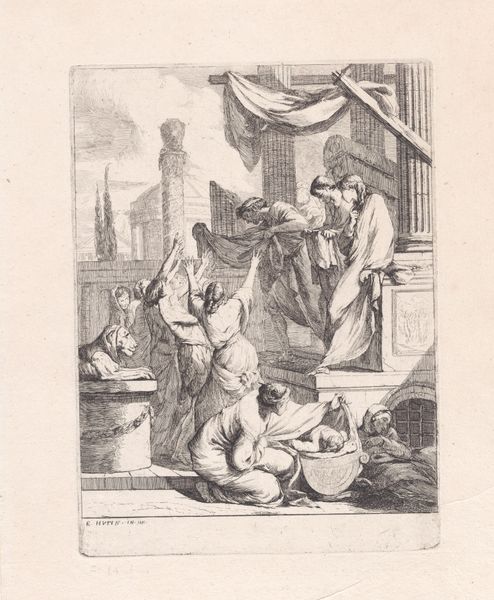
drawing, print, intaglio, engraving
#
drawing
#
baroque
# print
#
intaglio
#
figuration
#
female-nude
#
history-painting
#
nude
#
engraving
#
male-nude
Dimensions: plate: 6 15/16 x 9 15/16 in. (17.6 x 25.2 cm) sheet: 7 1/4 x 10 1/4 in. (18.4 x 26 cm)
Copyright: Public Domain
Robert Willemsz de Baudous made this engraving, Jupiter and Leucothoe, in the early 17th century, using the subtractive process of carving lines into a metal plate, which was then inked and printed. Look closely, and you can see the qualities of the incised line, how it renders light and shadow, volume and texture. Baudous was an accomplished printmaker, and this scene exemplifies the way that engraving could circulate imagery, and how its own techniques could lend the image distinct qualities. What’s interesting here is how Baudous used industrial means to create the printing plate; metalworking skills were transferred from craft guilds to the new world of visual reproduction. Think about the labor involved, the skilled hands that made not only this image, but the press that printed it, the paper that received the impression, and even the tools that Baudous himself would have used to make the printing plate. By considering materials, making, and context, we can fully understand the social and cultural significance of the image, challenging traditional distinctions between fine art and craft.
Comments
No comments
Be the first to comment and join the conversation on the ultimate creative platform.


